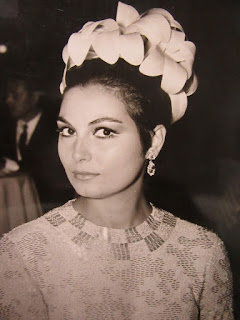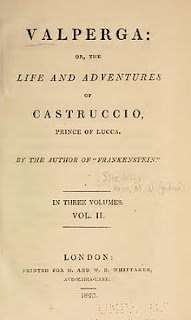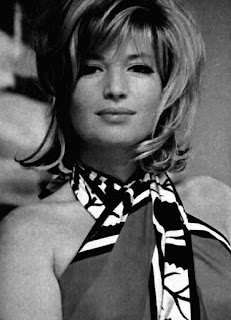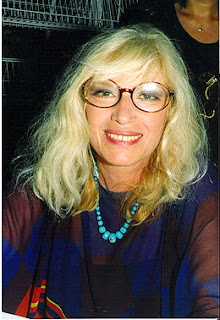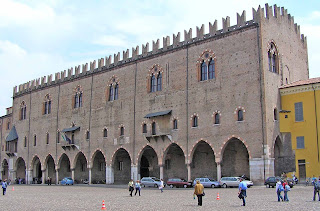Versatile musician wrote for stringed instruments and for films
 |
| Mario Castelnuovo-Tedesco began composing music for the piano when he was a boy, growing up in Siena |
He composed more than 100 pieces of music for the guitar, many of them written for the Spanish guitarist Andrés Segovia.
Because of anti-semitism in Europe, Mario emigrated to the United States in 1939 where he went to work for Metro-Goldwyn-Mayer, composing music for about 200 films.
Mario was descended from a family of bankers that had lived in Siena since the Jews were expelled from Spain in the 16th century.
He was introduced to the piano by his mother and was composing music by the time he was nine years old. His mother recognised his musical talent and encouraged him to study the piano and composition under well-regarded musicians.
Mario came to the attention of the composer and pianist Alfredo Casella, who included some of his work in his repertoire and promoted him throughout Europe as an up-and-coming young composer.
 |
| Castelnuovo-Tedesco recognised the potential of the guitar after meeting Segovia in 1932 |
Another source of inspiration for his music was his Jewish heritage. His violin concerto No 2, written in 1931 at the request of violinist Jascha Heifetz, showed his pride in his origins in the face of increasing anti-semitism in Europe.
Mario first met Segovia at the 1932 festival of the International Society of Contemporary Music in Venice, which prompted him to start writing for the guitar.
He went on to write about 100 compositions for the guitar, some dedicated to Segovia. He also composed concertos specifically for the cellist Gregor Piatigorsky.
By the 1930s, Mario was not only one of Italy’s leading contemporary composers, but also a sought-after pianist and an insightful critic.
But even before the Italian Racial Laws were introduced in 1938, Mario was banned from the radio and had performances of his works cancelled.
Listen to Castelnuovo-Tedesco's Opus 129 for guitar, played by the Tuscan guitarist Martina Barlotta
Conductor Arturo Toscanini and Heifetz both supported him in his bid to emigrate to the US and Mario left Italy with his wife and two sons on a ship from Trieste in July 1939 before the Second World War started.
 |
| Arturo Toscanini, who supported Castelnuovo- Tedesco in his bid to reach the United States |
Mario went to Los Angeles to work as a composer of film music for Metro-Goldwyn-Mayer. He was also asked by Rita Hayworth to write the music for her 1948 film The Loves of Carmen released by Columbia pictures.
He taught many other film composers, including John Williams, Henry Mancini, Jerry Goldsmith, Nelson Riddle and Andre Previn.
Mario became a US citizen in 1946 but frequently visited Italy after the war.
In 1958 he won the Concorso Campari with his opera The Merchant of Venice, which was first performed in 1961 at the Maggio Musicale Fiorentino under the baton of Gianandrea Gavazzeni.
Mario Castelnuovo-Tedesco died in 1968 at the age of 72 in Beverly Hills. He is buried at Westwood Village Memorial Park cemetery.
A collection of his manuscripts was donated to the Library of Congress in Washington by his family in 2000. The Mario Castelnuovo-Tedesco Collection is now accessible online.
 |
| A tree-lined avenue within Florence's Parco delle Cascine. which was once a hunting estate owned by the Medici |
Florence, where Mario Castelnuovo-Tedesco was born, has named a road after the composer. Fittingly it joins up with Via Arturo Toscanini, who was one of his close friends. The road is near Parco delle Cascine, a park on the north bank of the River Arno. The origins of the park can be traced to 1563, when it was developed as a farming and hunting estate for the Medici family. It became a public park in the early 19th century.
 |
| The Piazza Unità d'Italia in the centre of Trieste, which was Castlenuovo-Tedesco's starting point on his voyage to America |
Mario Castelnuovo-Tedesco left Italy in 1939 on board the SS Saturnia, which set sail from Trieste, a seaport that is the capital city of the Friuli-Venezia-Giulia region. Trieste lies in the northernmost part of the high Adriatic near the border with Slovenia and 30 kilometres north of Croatia. Over the centuries it has been ruled by the Romans, Venetians, French, Austrians, Germans and Yugoslavians. It officially became part of the Italian republic in 1954. Today, Trieste is a lively and cosmopolitan city and a major centre for trade and ship building. In 2012, Lonely Planet called Trieste ‘the world’s most underrated travel destination’. It is a fascinating place to visit because of the Venetian, Slovenian, Austrian and Hungarian influences in the architecture, culture and cuisine.
Also on this day:
1639: The birth of composer Alessandro Stradella
1881: The birth of politician Alcide De Gasperi
1899: The birth of supercentenarian Maria Redaelli
(Picture credits: Parco delle Cascine by Sailko; Piazza Unità by Diego Delso)
Home
